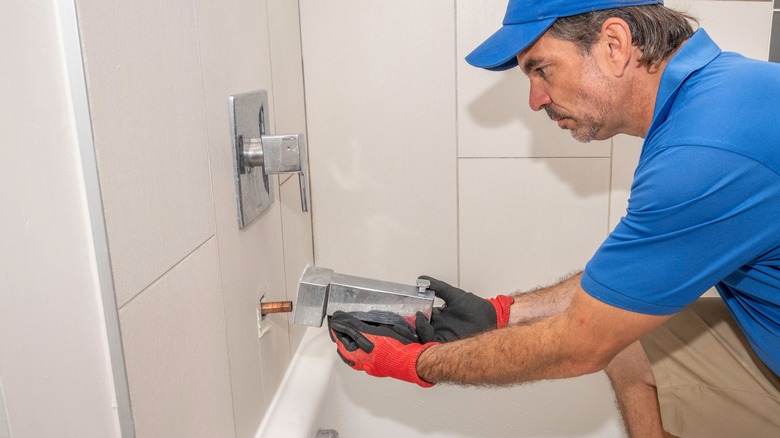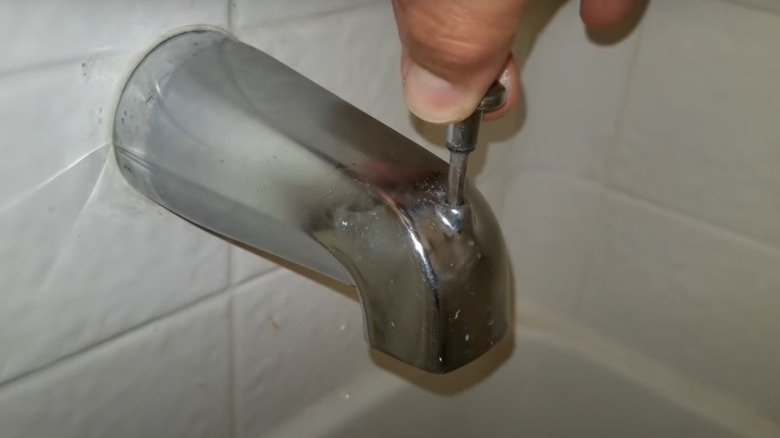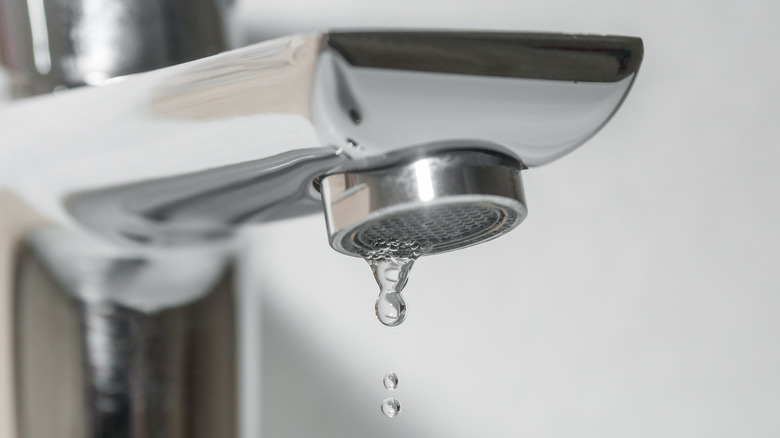Telltale Signs It's Time To Replace Your Shower Diverter
A bath and shower combo is common in most bathrooms these days. All you need to switch between the tub faucet and the showerhead is a handy little device called a diverter. As the name suggests, the diverter reroutes water flow between the two water paths for your preferred bathing method. The only downside is that if it stops working, you're usually stuck with the bath function, but can't get the shower working properly. The faucet continues to pour water into the tub, but without the diverter to block flow to the faucet redirecting water to the showerhead, all you'll get is a disappointing rinse with a weak spray. Knowing when to replace the diverter reduces the risk of finding yourself in this predicament.
There's conflicting information about when to replace a shower diverter online. Some plumbers suggest there's a lifespan of four or five years for the part, while others claim it could last 10 to 15 years. Rather than going by its potential lifespan, look for signs the part is wearing out — such as a sticking diverter, a leaking faucet, and weak water pressure. A new diverter can really amp up your combined shower and bathtub experience by improving water pressure and overall experience. Let's go over some of the telltale signs your shower diverter needs replacing, so you can fix it before it stops working completely.
The diverter is stuck, or difficult to move
One of the more obvious signs your diverter needs to be replaced is that it's sticking. There are a few reasons for this, one being the shower gasket. A gasket is a small rubber ring that creates a seal between the metal components of your shower. In this case, that's the diverter mechanism and the tub faucet. If the gasket gets loose, it could stick, making it difficult for the diverter to move. If this is the problem, you may need to replace the gasket. A sticky diverter doesn't always mean replacement parts though. Sometimes a shower diverter just needs a little TLC.
One issue that calls for elbow grease over replacement is hard water. According to the Water Quality Association, over 85% of Americans deal with hard water. It's not uncommon to find your shower diverter struggling to move because of the buildup it leaves behind. Hard water is caused by an abundance of minerals in your water supply — usually manganese, calcium, and magnesium. Luckily, you can loosen your tub's stuck faucet diverter with WD-40 or similar household products to fix hard water buildup. To get a stuck diverter moving again, pull it up and spray it with the lubricant, then push it back down and spray it again. It may require a few applications before the diverter starts working easily.
The tub continues to leak while the shower is engaged
Most diverters leak a little bit while the shower is engaged. According to the EPA, the allowable leak rate is 0.1 gallons per minute for new diverter valves and 0.2 gallons per minute for older ones. But when there is excessive leaking, that you should consider replacing your diverter. As the barely noticeable drip from the bathtub faucet becomes steady, problems ensue. Not only does a leak waste water as it drips down the drain instead of your showerhead – it also impacts water pressure. A leak signifies an improper seal inside the diverter, which lets water escape the tub faucet when you shower.
After dealing with the repercussions of a faulty shower diverter, replacing it could be one of the shower upgrades that will make you never want to get out. A steady shower stream, conserving water, and no more struggling to switch between bath and shower functions make this replacement well worth the effort. You can replace your shower valve for anywhere from $20 to $375 depending on the shower model, a DIY or professional take on the job, and whether you need to replace the diverter on the faucet, or the entire valve inside the wall. A simple diverter replacement can be done yourself by following the instructions on the packaging. Call an expert for more advanced replacements.


